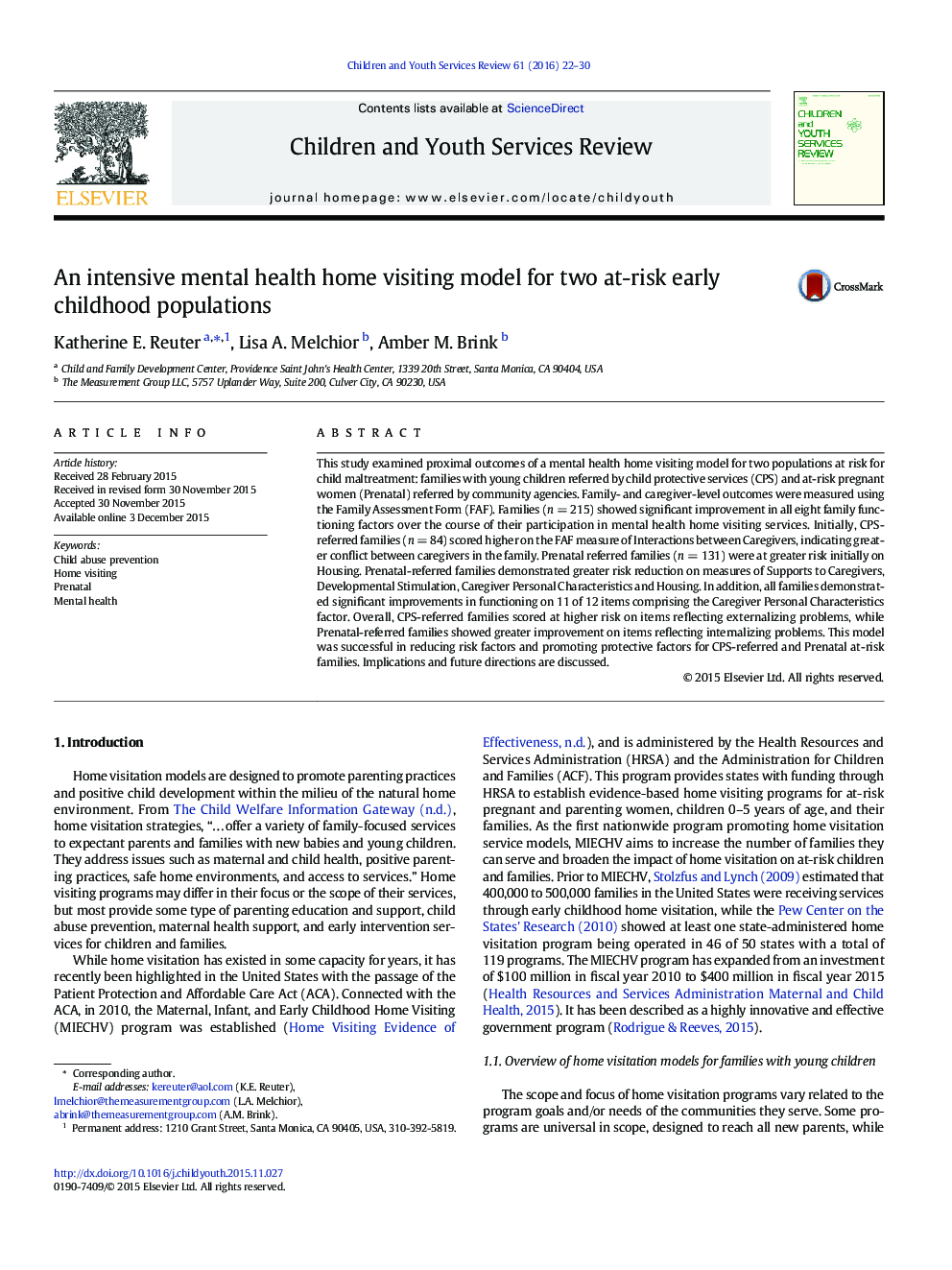| کد مقاله | کد نشریه | سال انتشار | مقاله انگلیسی | نسخه تمام متن |
|---|---|---|---|---|
| 345870 | 617772 | 2016 | 9 صفحه PDF | دانلود رایگان |
• Family functioning improved in two populations at risk for child maltreatment.
• Eight family functioning factors improved, representing a range of risk factors.
• Child welfare system referrals scored higher on interpersonal conflict measures.
• Caregivers reduced risk on 11 of 12 personal characteristics.
• Positive outcomes were observed at both the individual caregiver and family level.
This study examined proximal outcomes of a mental health home visiting model for two populations at risk for child maltreatment: families with young children referred by child protective services (CPS) and at-risk pregnant women (Prenatal) referred by community agencies. Family- and caregiver-level outcomes were measured using the Family Assessment Form (FAF). Families (n = 215) showed significant improvement in all eight family functioning factors over the course of their participation in mental health home visiting services. Initially, CPS-referred families (n = 84) scored higher on the FAF measure of Interactions between Caregivers, indicating greater conflict between caregivers in the family. Prenatal referred families (n = 131) were at greater risk initially on Housing. Prenatal-referred families demonstrated greater risk reduction on measures of Supports to Caregivers, Developmental Stimulation, Caregiver Personal Characteristics and Housing. In addition, all families demonstrated significant improvements in functioning on 11 of 12 items comprising the Caregiver Personal Characteristics factor. Overall, CPS-referred families scored at higher risk on items reflecting externalizing problems, while Prenatal-referred families showed greater improvement on items reflecting internalizing problems. This model was successful in reducing risk factors and promoting protective factors for CPS-referred and Prenatal at-risk families. Implications and future directions are discussed.
Journal: Children and Youth Services Review - Volume 61, February 2016, Pages 22–30
